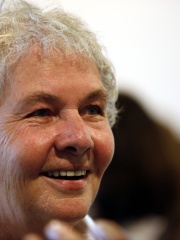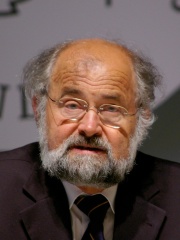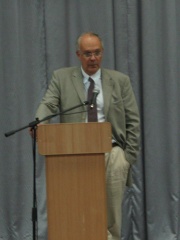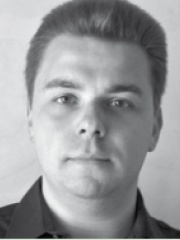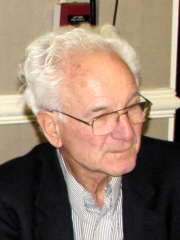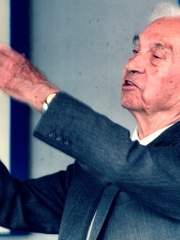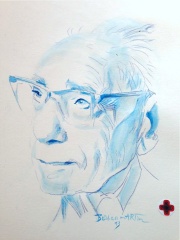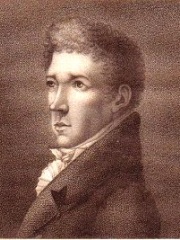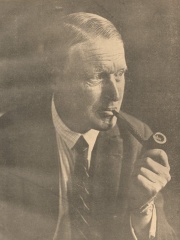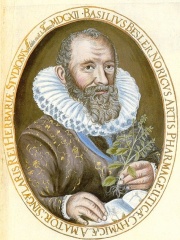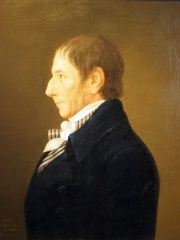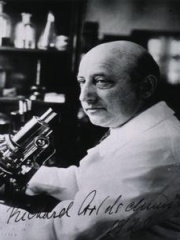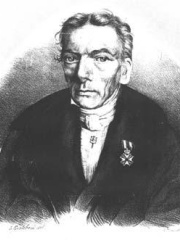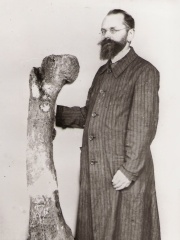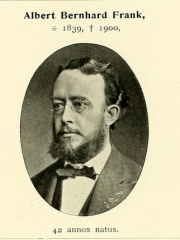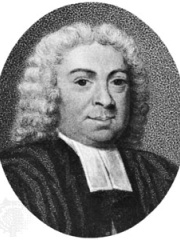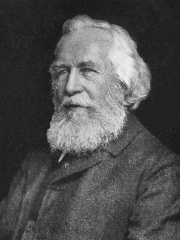
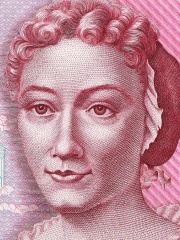
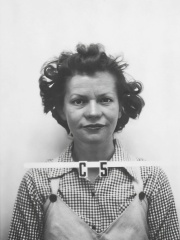
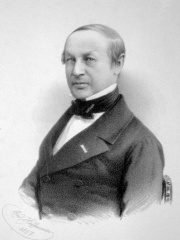
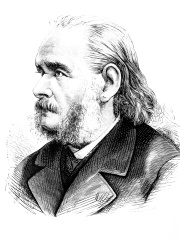
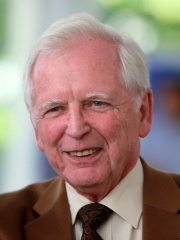
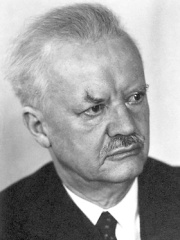

The Most Famous
BIOLOGISTS from Germany
This page contains a list of the greatest German Biologists. The pantheon dataset contains 1,097 Biologists, 168 of which were born in Germany. This makes Germany the birth place of the 2nd most number of Biologists.
Top 10
The following people are considered by Pantheon to be the top 10 most legendary German Biologists of all time. This list of famous German Biologists is sorted by HPI (Historical Popularity Index), a metric that aggregates information on a biography’s online popularity. Visit the rankings page to view the entire list of German Biologists.

1. Ernst Haeckel (1834 - 1919)
With an HPI of 75.12, Ernst Haeckel is the most famous German Biologist. His biography has been translated into 86 different languages on wikipedia.
Ernst Heinrich Philipp August Haeckel (German: [ɛʁnst ˈhɛkl̩]; 16 February 1834 – 9 August 1919) was a German zoologist, naturalist, eugenicist, philosopher, physician, professor, marine biologist and artist. He discovered, described and named thousands of new species, mapped a genealogical tree relating all life forms and coined many terms in biology, including ecology, phylum, phylogeny, and Protista. Haeckel promoted and popularised Charles Darwin's work in Germany and developed the influential but no longer widely held recapitulation theory ("ontogeny recapitulates phylogeny") claiming that an individual organism's biological development, or ontogeny, parallels and summarises its species' evolutionary development, or phylogeny. The published artwork of Haeckel includes over 100 detailed, multi-colour illustrations of animals and sea creatures, collected in his Kunstformen der Natur ("Art Forms of Nature"), a book which would go on to influence the Art Nouveau artistic movement. As a philosopher, Ernst Haeckel wrote Die Welträthsel (1895–1899; in English: The Riddle of the Universe, 1900), the genesis for the term "world riddle" (Welträtsel); and Freedom in Science and Teaching to support teaching evolution. Haeckel was also a promoter of scientific racism and embraced the idea of Social Darwinism. He was the first person to characterize the Great War the "first" World War, which he did as early as 1914.

2. Maria Sibylla Merian (1647 - 1717)
With an HPI of 69.66, Maria Sibylla Merian is the 2nd most famous German Biologist. Her biography has been translated into 61 different languages.
Maria Sibylla Merian (2 April 1647 – 13 January 1717) was a German entomologist, naturalist and scientific illustrator. She was one of the earliest European naturalists to document observations about insects directly. Merian was a descendant of the Frankfurt branch of the Swiss Merian family. Merian received her artistic training from her stepfather, Jacob Marrel, a student of the still life painter Georg Flegel. Merian published her first book of natural illustrations in 1675. She had started to collect insects as an adolescent. At age 13, she raised silkworms. In 1679, Merian published the first volume of a two-volume series on caterpillars; the second volume followed in 1683. Each volume contained 50 plates that she engraved and etched. Merian documented evidence on the process of metamorphosis and the plant hosts of 186 European insect species. Along with the illustrations Merian included descriptions of their life cycles. In 1699, Merian travelled to Dutch Guiana to study and record the tropical insects native to the region. In 1705, she published Metamorphosis Insectorum Surinamensium. Merian's Metamorphosis has been credited with influencing a range of naturalist illustrators. Because of her careful observations and documentation of the metamorphosis of the butterfly, Merian is considered by David Attenborough to be among the more significant contributors to the field of entomology. She discovered many new facts about insect life through her studies. Until her careful, detailed work, it had been thought that insects were "born of mud" by spontaneous generation. Her pioneering research in illustrating and describing the various stages of development, from egg to larva to pupa and finally to adult, dispelled the notion of spontaneous generation and established the idea that insects undergo distinct and predictable life cycles.

3. Katherine Oppenheimer (1910 - 1972)
With an HPI of 68.39, Katherine Oppenheimer is the 3rd most famous German Biologist. Her biography has been translated into 16 different languages.
Katherine Vissering "Kitty" Oppenheimer (née Puening; August 8, 1910 – October 27, 1972) was a German American biologist, botanist, and a member of the Communist Party of America until leaving in the 1930s. Her husbands were Frank Ramseyer, Joe Dallet, Richard Stewart Harrison, and physicist J. Robert Oppenheimer, the director of the Manhattan Project's Los Alamos Laboratory during World War II.

4. Theodor Schwann (1810 - 1882)
With an HPI of 68.32, Theodor Schwann is the 4th most famous German Biologist. His biography has been translated into 53 different languages.
Theodor Schwann (German pronunciation: [ˈteːodoːɐ̯ ˈʃvan]; 7 December 1810 – 11 January 1882) was a German physician and physiologist. His most significant contribution to biology is considered to be the extension of cell theory to animals. Other contributions include the discovery of Schwann cells in the peripheral nervous system, the discovery and study of pepsin, the discovery of the organic nature of yeast, and the invention of the term "metabolism".
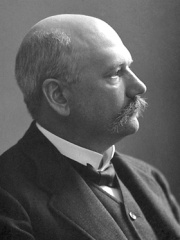
5. Albrecht Kossel (1853 - 1927)
With an HPI of 67.85, Albrecht Kossel is the 5th most famous German Biologist. His biography has been translated into 62 different languages.
Ludwig Karl Martin Leonhard Albrecht Kossel (German pronunciation: [ˈalbʁɛçt ˈkɔsl̩] ; 16 September 1853 – 5 July 1927) was a German biochemist and pioneer in the study of genetics. He was awarded the Nobel Prize for Physiology or Medicine in 1910 for his work in determining the chemical composition of nucleic acids, the genetic substance of biological cells. Kossel isolated and described the five organic compounds that are present in nucleic acid: adenine, cytosine, guanine, thymine, and uracil. These compounds were later shown to be nucleobases, and are key in the formation of DNA and RNA, the genetic material found in all living cells. Kossel was an important influence on and collaborator with other important researchers in biochemistry, including Henry Drysdale Dakin, Friedrich Miescher, Edwin B. Hart, and his professor and mentor, Felix Hoppe-Seyler. Kossel was editor of the Zeitschrift für Physiologische Chemie (Journal of Physiological Chemistry) from 1895 until his death. Kossel also conducted important research into the composition of protein, and his research predicted the discovery of the polypeptide nature of the protein molecule. The Albrecht Kossel Institute for Neuroregeneration at the University of Rostock is named in his honor.

6. Matthias Jakob Schleiden (1804 - 1881)
With an HPI of 67.41, Matthias Jakob Schleiden is the 6th most famous German Biologist. His biography has been translated into 50 different languages.
Matthias Jakob Schleiden (German: [maˈtiːas ˈjaːkɔp ˈʃlaɪdn̩]; 5 April 1804 – 23 June 1881) was a German botanist and co-founder of cell theory, along with Theodor Schwann and Rudolf Virchow. He published some poems and non-scientific work under the pseudonym Ernst.

7. Harald zur Hausen (1936 - 2023)
With an HPI of 67.40, Harald zur Hausen is the 7th most famous German Biologist. His biography has been translated into 63 different languages.
Harald zur Hausen NAS EASA APS (German pronunciation: [ˈhaʁalt tsuːɐ̯ ˈhaʊzn̩] ; 11 March 1936 – 29 May 2023) was a German virologist. He carried out research on cervical cancer and discovered the role of papilloma viruses in cervical cancer, for which he received the Nobel Prize in Physiology or Medicine in 2008. He was chairman of the German Cancer Research Center (Deutsches Krebsforschungszentrum, DKFZ) in Heidelberg.

8. Hans Spemann (1869 - 1941)
With an HPI of 66.10, Hans Spemann is the 8th most famous German Biologist. His biography has been translated into 55 different languages.
Hans Spemann (German pronunciation: [ˈhans ˈʃpeːˌman] ; 27 June 1869 – 9 September 1941) was a German embryologist who was awarded a Nobel Prize in Physiology or Medicine in 1935 for his student Hilde Mangold's discovery of the effect now known as embryonic induction, an influence, exercised by various parts of the embryo, that directs the development of groups of cells into particular tissues and organs. Spemann added his name as an author to Hilde Mangold's dissertation (although she objected) and won a Nobel Prize for her work.

9. Peter Simon Pallas (1741 - 1811)
With an HPI of 66.05, Peter Simon Pallas is the 9th most famous German Biologist. His biography has been translated into 59 different languages.
Peter Simon Pallas FRS FRSE (22 September 1741 – 8 September 1811) was a Prussian zoologist, botanist, ethnographer, explorer, geographer, geologist, natural historian, and taxonomist. He studied natural sciences at various Universities in early modern Germany and worked primarily in the Russian Empire between 1767 and 1810.
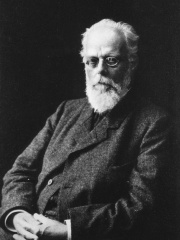
10. August Weismann (1834 - 1914)
With an HPI of 64.78, August Weismann is the 10th most famous German Biologist. His biography has been translated into 44 different languages.
August Friedrich Leopold Weismann FRS (For), HonFRSE, LLD (17 January 1834 – 5 November 1914) was a German evolutionary biologist. Fellow German Ernst Mayr ranked him as the second most notable evolutionary theorist of the 19th century, after Charles Darwin. Weismann became the Director of the Zoological Institute and the first Professor of Zoology at Freiburg. His main contribution involved germ plasm theory, at one time also known as Weismannism, according to which inheritance (in a multicellular animal) only takes place by means of the germ cells—the gametes such as egg cells and sperm cells. Other cells of the body—somatic cells—do not function as agents of heredity. The effect is one-way: germ cells produce somatic cells and are not affected by anything the somatic cells learn or therefore any ability an individual acquires during its life. Genetic information cannot pass from soma to germ plasm and on to the next generation. Biologists refer to this concept as the Weismann barrier. This idea, if true, rules out the inheritance of acquired characteristics as proposed by Jean-Baptiste Lamarck. However, a careful reading of Weismann's work over the span of his entire career shows that he had more nuanced views, insisting, like Darwin, that a variable environment was necessary to cause variation in the hereditary material.The idea of the Weismann barrier is central to the modern synthesis of the early 20th century, though scholars do not express it today in the same terms. In Weismann's opinion the largely random process of mutation, which must occur in the gametes (or stem cells that make them) is the only source of change for natural selection to work on. Weismann became one of the first biologists to deny Lamarckism entirely. Weismann's ideas preceded the rediscovery of Gregor Mendel's work, and though Weismann was cagey about accepting Mendelism, younger workers soon made the connection. Weismann is much admired today. Ernst Mayr judged him to be the most important evolutionary thinker between Darwin and the evolutionary synthesis around 1930–1940, and "one of the great biologists of all time".
People
Pantheon has 194 people classified as German biologists born between 1488 and 1974. Of these 194, 7 (3.61%) of them are still alive today. The most famous living German biologists include Christiane Nüsslein-Volhard, Erwin Neher, and Bert Sakmann. The most famous deceased German biologists include Ernst Haeckel, Maria Sibylla Merian, and Katherine Oppenheimer. As of April 2024, 26 new German biologists have been added to Pantheon including Katherine Oppenheimer, Georg von Langsdorff, and Archibald Reiss.
Living German Biologists
Go to all RankingsChristiane Nüsslein-Volhard
1942 - Present
HPI: 62.09
Erwin Neher
1944 - Present
HPI: 61.47
Bert Sakmann
1942 - Present
HPI: 61.27
Magnus Manske
1974 - Present
HPI: 49.68
Peter Duesberg
1936 - Present
HPI: 47.21
Alexander Wendt
1958 - Present
HPI: 43.76
Christian Drosten
1972 - Present
HPI: 36.22
Deceased German Biologists
Go to all RankingsErnst Haeckel
1834 - 1919
HPI: 75.12
Maria Sibylla Merian
1647 - 1717
HPI: 69.66
Katherine Oppenheimer
1910 - 1972
HPI: 68.39
Theodor Schwann
1810 - 1882
HPI: 68.32
Albrecht Kossel
1853 - 1927
HPI: 67.85
Matthias Jakob Schleiden
1804 - 1881
HPI: 67.41
Harald zur Hausen
1936 - 2023
HPI: 67.40
Hans Spemann
1869 - 1941
HPI: 66.10
Peter Simon Pallas
1741 - 1811
HPI: 66.05
August Weismann
1834 - 1914
HPI: 64.78
Ernst Mayr
1904 - 2005
HPI: 64.09
Bernard Katz
1911 - 2003
HPI: 63.96
Newly Added German Biologists (2024)
Go to all RankingsKatherine Oppenheimer
1910 - 1972
HPI: 68.39
Georg von Langsdorff
1774 - 1852
HPI: 52.82
Archibald Reiss
1875 - 1929
HPI: 51.81
Basilius Besler
1561 - 1629
HPI: 51.08
Albrecht Thaer
1752 - 1828
HPI: 50.90
Richard Goldschmidt
1878 - 1958
HPI: 49.88
Caspar Georg Carl Reinwardt
1773 - 1854
HPI: 48.69
Ernst Stromer
1871 - 1952
HPI: 48.58
Albert Bernhard Frank
1839 - 1900
HPI: 48.18
Friedrich Wilhelm Schultz
1804 - 1876
HPI: 48.02
Karl Julius Perleb
1794 - 1845
HPI: 47.97
Johann Jacob Dillenius
1684 - 1747
HPI: 47.92
Overlapping Lives
Which Biologists were alive at the same time? This visualization shows the lifespans of the 25 most globally memorable Biologists since 1700.

